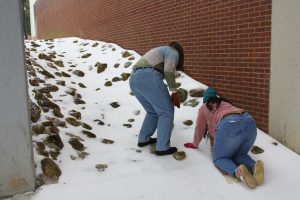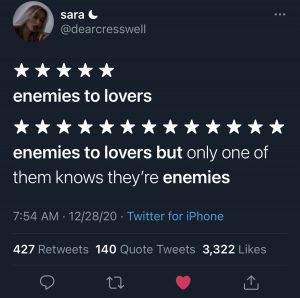As an MSA student, I can firmly say that my Sundays, without fail, are exactly the same. I wake up around 11:00pm after getting a solid night’s sleep for the first time in two weeks; I sleepily trudge downstairs with an objective: move my clothes from the washing machine to the dryer. I am greeted by my dog, excitedly shaking the rubber bone he carries in his mouth. I make the same two grilled ham and cheese sandwiches that I always do and pour out the crushed remains of the same lightly seasoned tortilla chips my parents started buying a few months ago. I eat, go back upstairs, and begin to back my things. It doesn’t take as long as it used to because I’ve finally learned how to appropriately pack for a weekend.
My dad arrives around 3:30pm. I’m already sitting in the living room with my mom; my luggage waits for me in the laundry room. I greet him and my stepmom, hug my mom goodbye, and bring my things to the car with help from all my parents. We chat about mundane things, but the conversation is still comfortable, even fun at times. My dad pulls into the drive through at a McDonald’s in Collins, just like we always do, and I hold onto my food as we cut the long, sharp turn that takes us back to Highway 84. I gaze out the window as I sip on my drink; the familiar taste of a strawberry-banana smoothie dances around my mouth.
As I stare at the greenery flying past, something dawns on me. I will only make this trip twice more before everything shifts. Realization sinks in. An entire year’s worth of trips from Soso to Brookhaven awaits me, but after May 16th, I will not drive here with the intention of greeting the same people, nor with the standards I have placed on myself as a junior literary student. While I make my first solo trip in my new car, the class of ‘21 will be spread out across the country, turning the page in the first chapter of their new lives, and the upcoming class of juniors will be anxiously fiddling in the backseat of their parents’ car as I did on move-in day. I will be faced with an abundance of new responsibilities and obligations, and I will not be the person I am in this moment.
The drive continues, despite the sinking pit in my stomach. The drive continues, despite how desperately I don’t want this chapter of my life to close. The drive continues, because it’s time to turn the page.
I glance back up at the trees on my right. It’s a straight shot from my house to MSA: ninety minutes of the same road and the same trees I’ve passed dozens of times before. A strange feeling rises in my chest, and I tell myself it is because everything around me looks different now, that I’m seeing things through a new perspective. But, that’s not true. This sensation only comes from my acknowledgement of the sameness. Instead of trying to find significance where there is none or searching for beauty where I know I don’t see it, I try to absorb my perception at this very moment. I intake the rattle of the car against the cracked streets and the way the bright sun makes my eyes squint. The sound of the seats rattling in the car, and the smudges on the window. The whirl of green that’s so intense it is nauseating at times. The static cutting through subpar music as we break past the limits of our local radio stations.
All students take a unique journey to MSA, in both a literal and figurative sense. No one will make a trip identical to yours; nobody else will pull out of your driveway and into the driveway of the school with the same perspective, the same emotions. Not a soul on this earth will get the gaze on the world around you with the same lenses that you hold presently, in this exact period of your life. On your next trip here, inhale the moment and let it fill your lungs before it becomes a fleeting memory that you only recognize when the shift happens. Cherish and document who you are now, because once you evolve into the more mature, sculpted version of yourself, it’ll be gone forever.






 I only share a bathroom with one person; again, this probably will not be the case for you. Each side has a four-unit storage shelf with three small drawers under those and two towel racks: one of the door, the other beside the shelves. I keep a chair on my side just so I don’t have to stand while I’m doing my dental and skincare routines and my makeup. My suite-mate has some of their artwork up to make the place feel more welcoming, and I really appreciate that aspect of our shared space.
I only share a bathroom with one person; again, this probably will not be the case for you. Each side has a four-unit storage shelf with three small drawers under those and two towel racks: one of the door, the other beside the shelves. I keep a chair on my side just so I don’t have to stand while I’m doing my dental and skincare routines and my makeup. My suite-mate has some of their artwork up to make the place feel more welcoming, and I really appreciate that aspect of our shared space.









